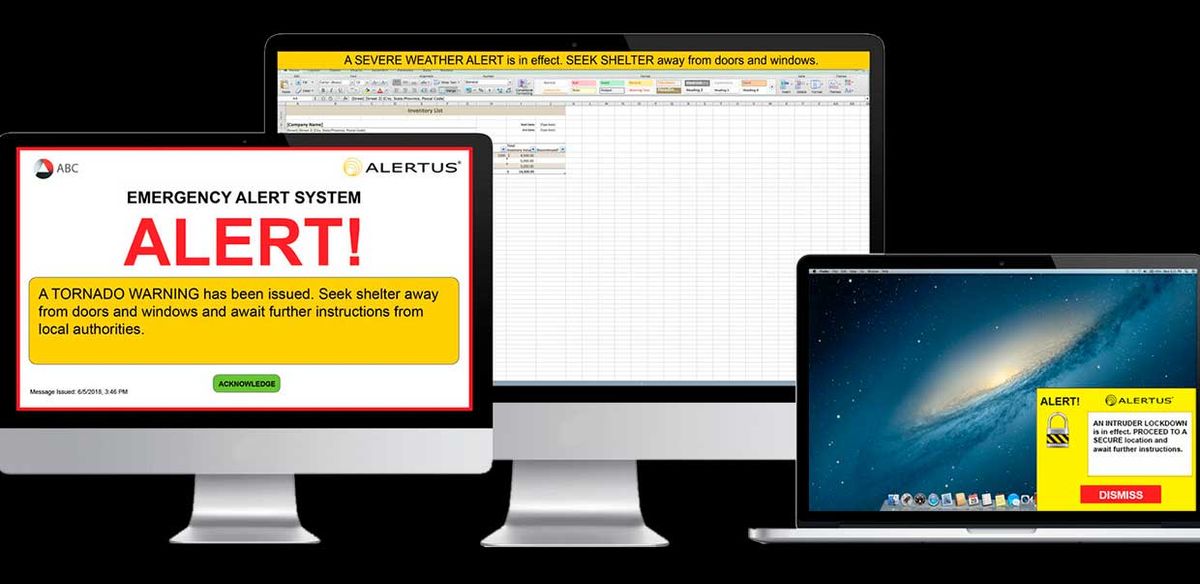It was easy for exhibitors to get lost in the virtual shuffle at CES 2021, where the digital exhibit hall simply displayed the logos of the 1900-plus exhibitors. To get any detail about a particular presenter, you had to search for their booth and click into it, wading through videos, power points, PDFs, and images to try to figure out exactly what was on display.
Among the obscured were the exhibitors from the U.S. Federal Emergency Management Agency (FEMA). If anyone even noticed the agency’s logo—then wondered what FEMA was doing at CES—they likely surmised that it was simply there in case of a literal emergency and passed it by.
At a real-world show, though, their exhibit would likely have caught the eye of the curious. It would have contained kiosks, large electronic billboards, and even braille readers showing off the diversity of devices that are part of FEMA’s Integrated Public Alert and Warning System (IPAWS).
And, had a CES attendee stopped to look, the IPAWS folks would have explained their program to help consumer products designers build emergency alert capability into just about any system that includes a display.
IPAWS is the organization that sends wireless emergency alerts, like Amber Alerts and weather warnings, to mobile phones. It also manages the emergency alert system that triggers the audio warnings that interrupt radio and television broadcasts. In the past year, I’ve mostly seen phone alerts in the form of public health announcements of new shelter-in-place orders and, in one case, a tornado warning that gave me time to pull off the road before the weather got particularly crazy.
IPAWS acts as what it calls a “redistributor,” that is, it takes alerts from counties and other agencies and passes them on to devices designed to display them. Besides mobile phones, said IPAWS program analyst Justin Singer, such devices today include digital billboards, Braille readers, and public tourism kiosks.

But, says Singer, getting alerts in front of the people who could benefit from them gets more challenging when people spend more and more time in front of a diversity of displays. And he is hoping that the consumer electronics industry will help them meet this challenge.
“We are relying on the industry to take this on as a project and implement our technology in their products. We don’t have the ability to build products ourselves and we don’t want to regulate anybody. We just want to get alerts to as many people as possible through as many media as possible,” Singer said.
Take gamers. “Gamers are inherently cut off. I don’t want to interrupt their games, but if I can get a little alert on their screen displaying a tornado warning, say, maybe I can get them to move to the basement,” he continued. “Virtual reality would be really important; there you are really cut off. I’m trying to get smart mirror companies to see the light, too.”
Singer has tried to reach out to Microsoft’s Xbox team but has yet to connect with any interested engineers. He says he did manage to have a CES conversation with representatives of Sony. But trying to catch the eye of product designers at a virtual show has proven difficult. Singer would like to tell developers that IPAWS offers design help, and can also give them access to a laboratory in Maryland that would allow them to test their products on a closed system.
And, he’d tell them, “If you build it, we will show it off in our CES booth next year.”
Potential developers can find out more about the program by contacting fema-ipaws-stakeholder-engagement@fema.dhs.gov.
Tekla S. Perry is a former IEEE Spectrum editor. Based in Palo Alto, Calif., she's been covering the people, companies, and technology that make Silicon Valley a special place for more than 40 years. An IEEE member, she holds a bachelor's degree in journalism from Michigan State University.


